The following guest post is by Matt
Rosenberg, founder and editor of Public Data Ferret, a project of the non-profit Public Eye Northwest. In this special in-depth report, Matt looks at what it will take for the efforts of the recently formed global Open Government Partnership to succeed, taking in initiatives from across the globe and addressing their context-specific challenges and potentials.
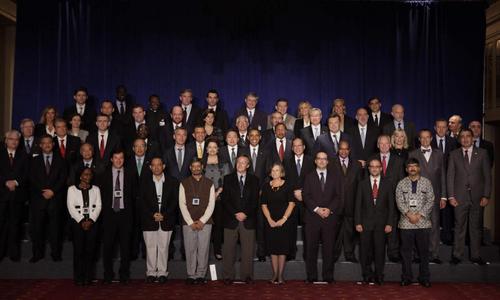
U.S. president Barack Obama recently joined with other global leaders to formally unveil the Open Government
Partnership as the United Nations met in New York City. Funding for the partnership
so far is $733,500 from the Transparency and Accountability Initiative, $350,000 from
Google and in-kind contributions from the U.S. government, World Bank Institute
and others. The eight charter members have already formalized their commitment to
the core
principles of disclosure, engagement, integrity, innovation and accountability.
The eight are the Year One co-leaders the U.S. and Brazil, plus Indonesia, Mexico,
Norway, the Phillippines, South Africa and the United Kingdom. Another 38 countries are committed to
joining, many from eastern and northern Europe but also seven from South and
Central America, four from Africa and three from the Middle East. An important step in
the partnership’s agenda will come at a March 2012 Brazil meeting with the presentation
by each new member of an open government plan of their own, against which future
actions can be measured.
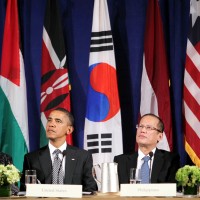
The New York event gave rise to the expected lofty statements. In a speech, Philippines President Benigno S. Acquino III,
remarked: “This is what democracy is all about: having a government disciplined
enough to imbibe in itself the principles of transparency, accountability, and citizen
involvement—the necessary preconditions to poverty alleviation and inclusive and
sustainable economic growth.”
Who could be against imbibing that? But in an open society the media don’t always
parrot the party line. Only the day prior, news reporters had chastised the White House in
print for an advance briefing on the Open Government Partnership by State Department
officials who insisted on being described only as “Senior Administration Official 1” and “Senior
Administration Official 2”. Standard operating procedure in most high-level
briefings, true. But, implied the reaction – from the Associated
Press, Tech President, and Politico, to name a few – rather discordant for a big “transparency” initiative. It wasn’t the first
time in recent months that the gap between words and deeds on U.S. open government
efforts had drawn notice.
The day after the partnership’s formal unveiling, J. Nicholas Hoover of Information
Week wrote:
…the Obama administration’s commitment to open government hasn’t
always lived up to its rhetoric. For example, the White House has aggressively pursued
whistleblowers and leakers of information, and in court cases has regularly used the
defense that certain data must be shielded from the public as state secrets. (A March
2011) event recognizing Obama for a commitment to open government was ironically closed to the press…Congress’ record in
recent years has also been mixed. For example, while the websites of congressional
committees now nearly universally stream congressional hearings, Congress has slashed
a key source of funding for transparency efforts. Federal court records are also difficult
to access online, and are often available only behind a paywall. The new National Action
Plan and international partnership on open government are positive additional steps
pointing toward increased transparency, but will ultimately be judged by their execution,
and not the initial plans.
Exactly right. Success for OGP will begin with helping member nations understand how
to best harness the passion and capacity of disparate ground-level actors – particularly
NGOs, local governments, journalists, students, engaged citizens, artists and social
media users. To complement important data they already have on the communications
and personal technology preferences of constituents, OGP nations should commission
independent surveys on how the civic landscapes in their respective nations are perceived
at home.
This qualitative harvesting must be incisive and unflinching because real conditions on
the ground greatly shape implementation of open government. Earlier this year I led a
conversation on transparency with mid-career government officials from Yemen, Tunisia,
Guineau, Djibouti, India, Pakistan, Trinidad and Tobago, Lithuania and South Korea,
who were among the enrollees in a year-long program as Hubert H. Humphrey Fellows
at the University of Washington’s Evans School
of Public Affairs, in Seattle. The dominant concern of the group was how to develop
a flexible model for building open government systems, keeping in mind widely varying
socio-political environments in different nations. Participants identified some of the big
questions that need to guide any open government visioning at national scale. These fell
into two broad areas.
1) Political culture. Are political corruption and cronyism an animating concern? How is
the national government experienced, on the whole, by the populace? As an authoritative
patriarch which discourages close scrutiny? As despotic and dangerous, or unstable?
As a work in progress, or in the best case as genuinely transparent, strategic and
collaborative? Do the principles of universal human rights have purchase, and is there
true freedom of the press or not?
2) Education, economy and technology. What is the state of education in the country –
do scientific and secular views hold sway or not? Are higher ed and institutional R&D
in a healthy state, and is there a burgeoning community of public-spirited software
developers? Is the economy open or state-run? What are the particulars of technology
adoption and access across class lines?
The answers will help guide whether an open government planning process can even be
credibly launched in a given nation, and how; or whether it may be wiser to take a more
incremental approach.
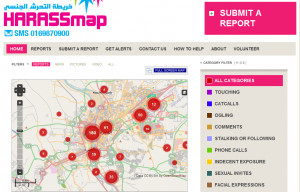
Egypt, for instance, could hardly be expected to commit now to a formal national plan
for open government nor is it yet part of OGP. But as the country sorts out its post-Mubarak political future it’s already evident
that crowd-sourced data, literally from the street, are being used to push for social
and government reforms. Women in Cairo are using a site called Harass Map, built on the open-source platform Ushahidi, to
document widespread and traditionally tolerated sexual harassment. Reports can be
texted, e-mailed or tweeted, to be integrated into the growing and mapped compendium
of uncivil behavior. Categories include rape-sexual assault, indecent exposure, stalking or
following, touching, sexual invites, phone calls, comments, catcalls, and ogling.
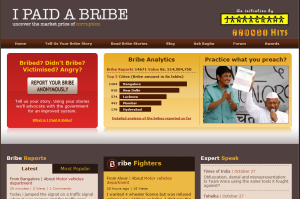
In India, where government corruption is still considered a notorious scourge, any
state-stamped transparency scheme would be met with skepticism. Yet that hasn’t
prevented a vibrant community of reformers from adapting new tools to an old concern.
The transparency site ipaidabribe.com collects
firsthand reports on the intimidation by government officials of businesses and citizens
through informally-mandated payoffs, and offers related data analytics. It was created
by Janaagraha, a
Bangalore-based non-profit focused on quality of life and citizenship in urban India.
In the Central Gondwana region of India, tribal members report on and learn about
problems that citizens encounter with government, through a mobile phone voice portal
called CGNet Swara. It has a Web
hub and journalists to vet and edit reports. The service’s impacts include seeding mainstream overage and sometimes
corrective action on problems with worker compensation, food security, public safety and
resource extraction. Recognizing the vital role of local intelligence, CGNet Swara has
branched into training citizen journalists.

India’s Association for Democratic Reforms,
or ADR, is a pioneering open government group in the country, which has successfully
won the right for voters to know the financial, criminal and educational backgrounds of
candidates for office. In a country where reformers sadly note that many candidates are
criminals, this matters. The information is made available via Short Message Service on
mobile phones. ADR also monitors courts and elections, provides counsel to officials on
best practices, and reports on a wide range of transparency and corruption issues.
India has not yet committed to join the Open Government Partnership, but as the old
saying goes: if the people will lead, then perhaps the leaders will follow.
Which isn’t to say leadership from officialdom can’t become transformative. One recent national data initiative has attracted
broad notice in “open” circles but it will take time to gauge its social utility. It was
launched this summer by the Kenyan government, which will be joining the Open
Government Partnership. The Kenyan open data portal covers a wide range of economic,
government spending, health, education and other topics and pointedly emphasizes
opportunities to drill-down to the state, regional and local level. There are maps and
fact sheets, charts and tables and raw data for developers to create new apps. Community apps developed
from initiative data so far include tools to scrutinize energy use and progress on
Community Development Fund and World Bank projects, and to map and categorize
constituent service needs. An especially useful mash-up is BOOST, which presents annual spending in the provinces side-by-side
with demographic, poverty and public health indicators such as percent of households
with dirt floors, or connections to the main sewer line; and percent of population that has
never attended school, or is of pre-primary age.
While young, Kenya’s initiative shows how trust and collaboration might grow
through open data, although that is just one aspect of the transparency agenda. In
contrast, Ukraine, another of the 38 nations joining OGP, is trying to get to first base,
by establishing rules of law and building civil society, as I learned when I met
with a Ukraine delegation visiting Seattle earlier this year through the U.S. State
Department’s International Visitor Leadership Program and The World Affairs Council – Seattle.
The visitors included representatives of Ukraine NGOs working, variously, to provide
legal aid to citizens in property disputes with government; to strengthen the climate for
small and medium-sized business by modernizing the tax code and fighting government
corruption; and to promote freedom of association and civil society organizations. Other
participants represented organizations working to fight media censorship, and to develop
civic capacity projects targeted to youth.
Knowing their animating concerns, and listening to their questions – which showed
keen interest in matters as granular as the posting online of local city council meeting
agendas before the meetings are held – I could begin to sense what a more genuinely open
government in Ukraine would need to look like.
But for the administration of President Victor F. Yanukovich to have any credibility
on open government, a major course correction is needed. As two former U.S.
ambassadors to Ukraine observed last March, the nation’s reputation for openness
is suffering because of a “corrupt, politically-driven judiciary” and state prosecutors
doing Yanukovich’s political bidding. In October a
show trial conviction of his political rival and former Prime Minister Yulia V.Tymoshenko added to that perception, sparking vociferous protests and threatening the
nation’s integration into the European Union. Even before the verdict, the case was being
read as, in the words of one expert on
European governance, “an extremely worrying sign that (Yanukovich) is moving to
exert a monopolistic control over politics.”
The road to credibility for Ukraine is littered with larger boulders. Consider the
conditions described in Ukraine via Transparency
International’s “Corruption Perceptions Index 2010” report issued this year. Ukraine
scored only 2.4 on a scale of 10, far more at the “highly corrupt” end of things than
the “very clean.” Key concerns included: murkiness about the difference between
political and government workers; weak laws on conflict of interest for public workers;
lack of competition for high-level public sector jobs; poor legal rights for public servants
arbitrarily fired; law enforcement agencies and a judiciary which don’t prosecute
corruption effectively; a lack of whistleblower protections for public employees; and
a lack of annual performance and accountability reports required of the legislature and
government agencies.
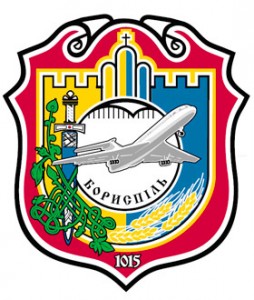
However, farther from Kiev are promising signs. Open government in Ukraine is building
from the grassroots up. Earlier this year, Albertville, Minnesota City Administrator
Larry Cruse was part of a local delegation of public officials which visited counterparts in Boryspill,
Ukraine in an exchange program intended to build skills and capacity around open
government. (A group from Boryspil visited Minnesota in late September.)
Cruse lived with a local family for a week and immersed himself in local governance.
Unlike like smaller and non-partisan municipal bodies in the U.S., the local council of
Boryspil had 48 members from 13 political parties. But Cruse observed that caucuses and
negotiations to form issue-specific coalitions helped provide order to the process, and that
open government in Boryspil had a strong face-to-face component. Cruse wrote:
A good portion of our time was spent in strategic planning sessions with
anywhere from 20 to 50 people representing elected officials, city staff and citizens of
Boryspil. Throughout the day, the large groups were broken up into small sub-groups
to discuss various topics, exchange ideas and then report their finding back to the larger
group for further discussions and consensus building. There were elected officials and
staff mixed together with members of the community at all the functions. The students
and community members were delighted and emotionally moved to be sharing their
thoughts and ideas alongside of the Mayor and other officials.
National governments seeking to become open should look not only to smart NGOs,
software developers, students and journalists, but to town councils, which generally tend to face more direct pressure for accountability on a daily basis in their communities.
Although varying conditions may dictate different strategies, the ultimate destination
is a common one. Any government that wants to call itself open must provide free and
accessible public information on taxation, draft and adopted budgets, and actual year-
end spending including contract awards. There should be full and open disclosure on
government bidding processes, job openings, salaries and benefits, court proceedings
and legislation prior to and after passage. Also vital are sharing of key data on
economic performance, public health conditions, and fair metrics of student and
teacher performance at public schools. A lynchpin of open government is a trustworthy
and transparent elections process including impartial and open adjudication of fraud
allegations.
A next layer of transparency would include wide promotion of census data, and adopted
laws which serve to daylight public records, lobbying, campaign contributions, and ethics
and accountability oversight in government.
Girding the whole disclosure framework should be government reports and data created
in machine-readable formats, and liberally posted online.
As OGP, its member nations and their domestic partners work to bring ambitious open
government plans to life, here are a few more things they should bear in mind.
formal and public adoption by government. Nobody wants to report into an abyss. “Open
311” sites which allow citizens to report and see resolution of cracked sidewalks, broken
streetlights, gaping potholes, broken park equipment can be a huge force for building
trust and engaging publics – if reports actually prompt action. To get to this point requires
real collaboration between site developers, officialdom, and constituents.
developers are crucial partners, keep the needs of everyday constituents foremost.
Throwing 400 government data sets online is not an open government policy. Track
what developers do, if much of anything, with all those data sets once posted. How many
actually get rendered into browser-friendly Web sites and easy mobile apps? How widely
are the sites and apps used? And make sure to look beyond the open data craze no matter
how well outcomes of data portals are tracked. As Nathaniel Heller of Global Integrity, an OGP partner,
blogs:
Instead of fetishizing open data portals for the sake of having open data
portals, I’d rather see governments incorporating open data as a way to address more
fundamental structural challenges around extractives (through maps and budget data),
the political process (through real-time disclosure of campaign contributions), or budget
priorities (through online publication of budget line-items).
communications including laws, regulations, audits, reports, contracts and more should
be in plain language only.
user-focused. Videos of full meetings of legislative or regulatory bodies need should
be indexed by main topics and include keyword-searchable transcripts. Prototypes are
already emerging.
by highlighting the oversight work of organizations such as Reporters Without Borders, Human Rights Watch and Amnesty
International, and second, through vigorous state prosecution of those who seek to
censor, threaten or otherwise intimidate reporters and activists. Hello, Mexico?
issued by the U.S. Federal Communications Commission earlier this year, more
foundations and philanthropists should support independent non-profit media doing
valuable work on transparency, particularly “last mile delivery” of the fruits of open
government.
It’s a time of challenge, and of possibility. Every major development right now on the
global political scene – including the financial meltdown in Greece, economic troubles
in the U.S., the wave of pro-liberty uprisings in the Arab world, even the little noticed efforts of locals and NGOs
to shepherd the tiny West African nation of Guineau-Bissau away from the despotic
rule of drug profiteer-kleptocrats – intersects closely with the need for open, honest and
accountable government. Because the need is so deep and broad, the Open Government
Partnership represents an important attempt to bring a multilateral and official hue to the
challenge.
But public officials who aspire to wring utility more than huzzahs out of open
government initiatives would do well to heed the musty adage, “dance with them
that brought you,” popular among the old-time ward-heelers of New York, Boston,
Philadelphia and Chicago.
It’s just that the partners and the venue for the dance look a whole lot different these days.
Theodora is press officer at the Open Knowledge Foundation, based in London. Get in touch via press@okfn.org
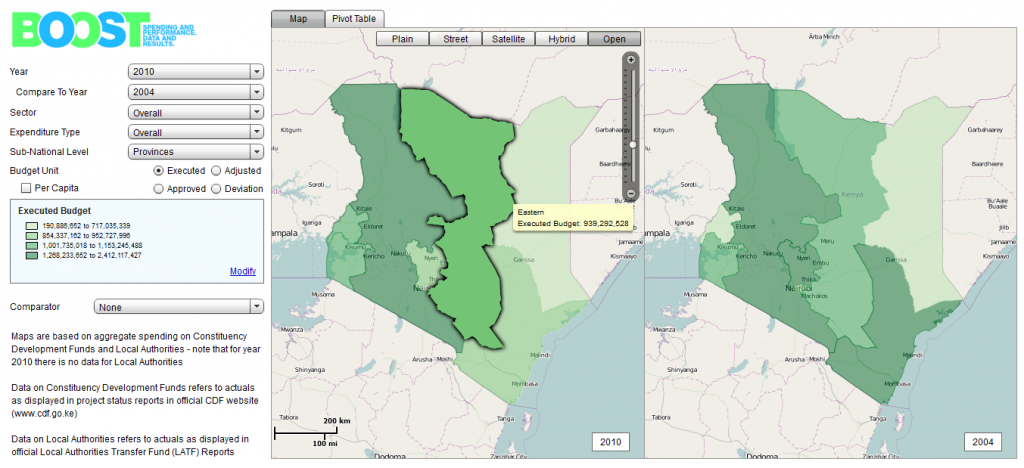









Attached is my story of our Minnesota Ukraine May, 2011 trip
Boryspil, Ukraine Civic Exchange Program, Larry Kruse, City Administrator of Albertville Minnesota
On May 11, 2011, I traveled from Albertville Minnesota to Boryspil, Ukraine where I participated in a Local Government Civic Leadership Exchange Program with a team of Minnesota officials. The team included the Mayor of Hopkins Eugene Maxwell and his wife Ilene; Molly Parks, former Sunfish Lake Mayor; James Brimeyer, member of the Metropolitan Council; Sara Folstad, Renville County Administrator; Former City Manager Richard Fursman his wife Irina, with daughter and college sophomore, Elizabeth.
The Ukraine/Minnesota Local Government Exchange Program was developed and coordinated by Richard and Irina to advance the skills, and build capacity of local government officials in Ukraine and Minnesota through emergence in open government practices. In the Ukraine, I had the opportunity to exchange ideas within the context of another culture while building relationships with my new Ukrainian friends and ironically, with my Minnesota team members. Following the week long intense formal program, I and three other team members then traveled overnight by train to Yalta, to further explore the Ukrainian way of life in preparation for our counterparts’ return visit in September.
We arrived after a 15 hour journey from Minneapolis to the Boryspil International Airport. The area is shaking off a hangover of the drab soviet look and feel with a major terminal and runway expansion that will rival the best airports in Europe and America. Leaving the airport, the roads where busy with a mix of old small boxy cars from the early Russian days and newer BMW’s and Audi’s. I quickly learned that having a car is still a luxury many cannot afford. The passenger train system we rode from Kiev to Simfferpol was similar quality to Amtrak. Our four person sleeper car was a very comfortable, excellent way to travel. When we were not being chauffeured by host families or a chartered bus, we traveled by taxi, subway, bus, and trolley throughout the city and countryside, which demonstrated that there is no need to own a car.
About half of us stayed with host families who were either employees or elected officials. The others stayed in a rather plush, bed and breakfast type of rural hotel. I felt fortunate to live with a family for a week so I could fully understand their daily life. My hosts live on the fifth floor of a large concrete multi-family building with about 200 units. These plain looking, multi-family buildings with no elevators were the most dominant feature in and around Boryspil and Kiev. Each building was a copy of the next with a small green space and tot-lot for children. Above, the laundry was drying on the balconies, while below, underbuilt parking lots over-flowed with an ever increasing number of larger cars.
Once I reached the fifth floor I approached the apartment that was guarded by two solid doors, both secured with double locks. Inside was a nicely decorated apartment with two bedrooms, a small living room, a tiny kitchen with dinette, bathroom containing just the toilet and a room just large enough for a sink, tub and mini-washing machine. I comfortably slept on the couch in the living room with the rest of the family sleeping nearby. My host Victor, is a young lawyer about 25 years old who works for one of the Ukraine’s 24 oblasts (provinces). He lives with his fiancé who is also a lawyer, and his father Yuri, who is a colonel with the Fire Department and his mother Victoria who works as a nurse. Their routine of getting up and off to work was not unlike our daily dash in Minnesota. Then after a long day, dinner was served which featured fresh vegetables, a local meat dish, many discussions and several toasts of vodka.
Their system of governance was very different than anything I have experienced as a city administrator. There are 48 council members in Boryspil comprised of 13 different political parties. When attending a Council meeting we observed the Mayor and party majority leader sit up front on stage while the rest of the Council sits on one side of a 200 seat auditorium with staff and audience on the other. The parties caucus prior to the meeting on how they will vote and negotiate coalitions much like the legislature does. On three memorable occasions during the meeting, a lone communist party member gave vociferous short speeches which were met with laughs or groans, followed by an equally strong rebuttal. The agenda included debates on new taxes, funding for infrastructure, and updates on numerous projects. It was interesting to see a different system handling the same issues we struggle with all the time.
A good portion of our time was spent in strategic planning sessions with anywhere from 20 to 50 people representing elected officials, city staff and citizens of Boryspil. Throughout the day, the large groups were broken up into small sub-groups to discuss various topics, exchange ideas and then report their finding back to the larger group for further discussions and consensus building. There were elected officials and staff mixed together with members of the community at all the functions. The students and community members where delighted and emotionally moved to be sharing their thoughts and ideas alongside of the Mayor and other officials. We were assigned translators, who were mostly college volunteers with a desire to practice their English skills and participate in visioning for their community. For the most part they did very well and communication was not a problem.
There were many other highlights aside from working with Boryspil; some of the most memorable include getting to know the Ukrainian people; our tour of Kiev memorials and tourist places; the great food and its great visual appearance; vodka toasts and good wine; getting to know my fellow Minnesota team members; experiencing something special with another culture; our train trip across the Ukraine to Simferopol and Yalta; experiencing the daily living of a typical family, getting to know our translators and our trip to the parliament in Kiev. However, the things I will remember the most are the friendliness of our Ukrainian counterparts in Boryspil and the care they showed us throughout our visit. I will always remember my host family’s hospitality, my overnight stay in a small rural village with their grandfather, and the daily living experiences they shared with me.
During our stay it was easy to see the contrasts and contradictions of a City with a 1,000 year history steeped in the past while trying on the trappings of a 19 year old independence. We memorialized our visit by gifting thirty trees which we planted in a cemetery/park. The hallowed ground held thousands of remains from many people who starved during the 1932/33 Ukrainian Famine, fallen WWII solders, and victims of the Holocaust. The most striking story was of the mass starvation Ukraine endured. Stalin’s favorite killing tool was mass starvation, a tactic he used ruthlessly against his own people. The collectivization program in Ukraine resulted in a famine which cost 6 Million lives in 1932/33. “It was a Stalin-made famine,” reported Time Magazine in its January 1, 1940, issue. Eighty years later we were planting trees with the hopes that our relationship, like the trees, would continue to grow.
My fellow Minnesota participants and I have a hard time explaining what a life changing event this has been for us. We had the opportunity to meet and live with people who not long ago, were considered to be our enemy (cold war). Those walls quickly broke down and be became fast friends. As an example, I rode to daily sessions with a former Russian soldier, who was trained that Americans were the enemy and not to be trusted. Initially, that distrust and coldness was evident, but by mid-week that had softened and I could feel a change. I saw a tear in this former soldier’s eye and received a hug as I departed. They learned that we did not have an agenda and were not as some politicians had portrayed us to be. In return, we learned how to remove barriers and build relationships with people who speak a different language and view the world from a different cultural and historical reference. My belief was reinforced that if this can be done in a foreign country, we can do this back home where sometimes we don’t cooperate with our neighbors as well as we could. I arrived home with a sense of excitement to go back to work and with a positive, can do attitude about many of the challenges I face as a local government manager.
On September 25th, a delegation of Boryspil civic leaders, business people and residents visited Minnesota for a week of leadership exchange involving local government and economic development. That is another story for later on. Both experiences were a grand success for everyone involved and excitement is building for another trip next spring.